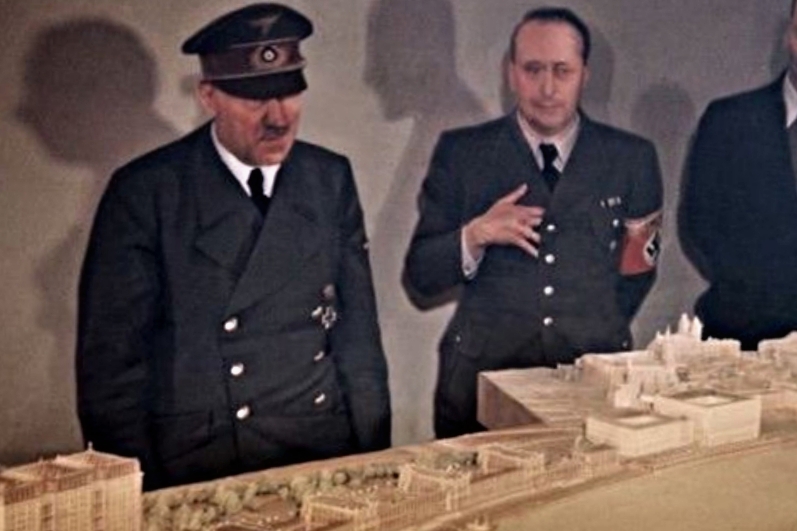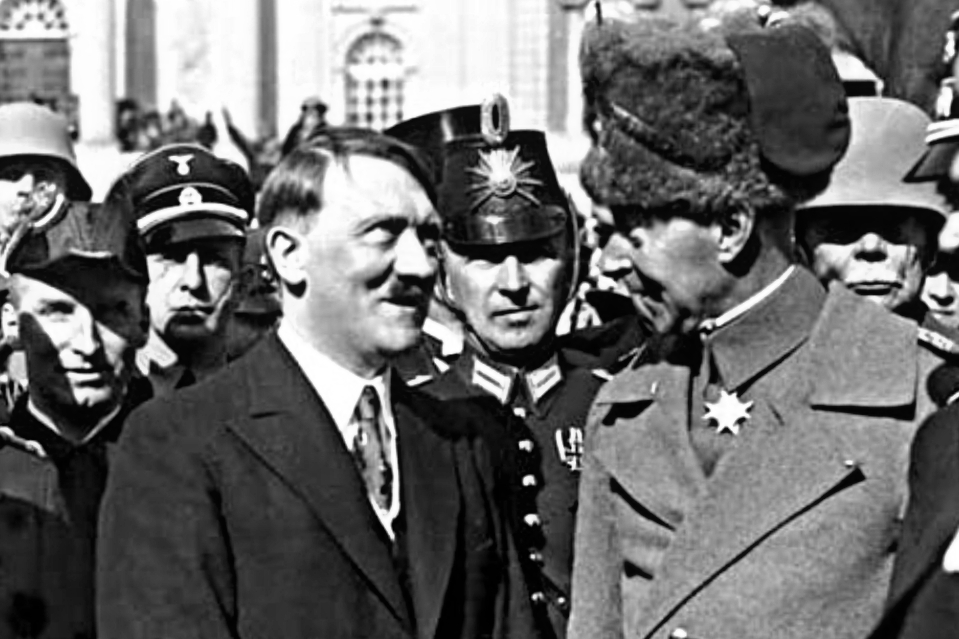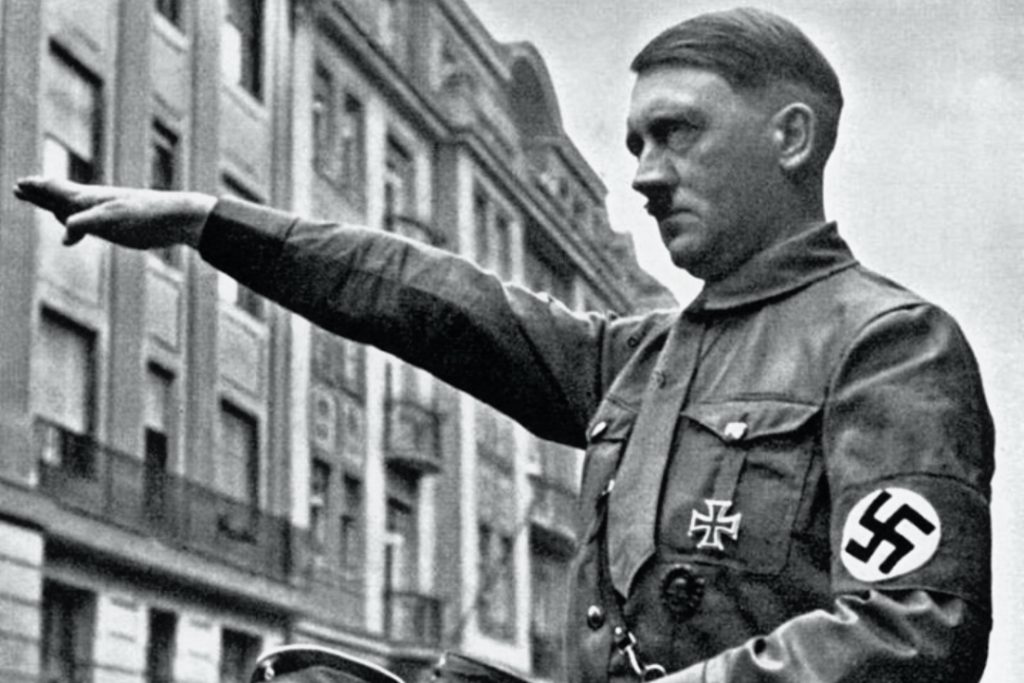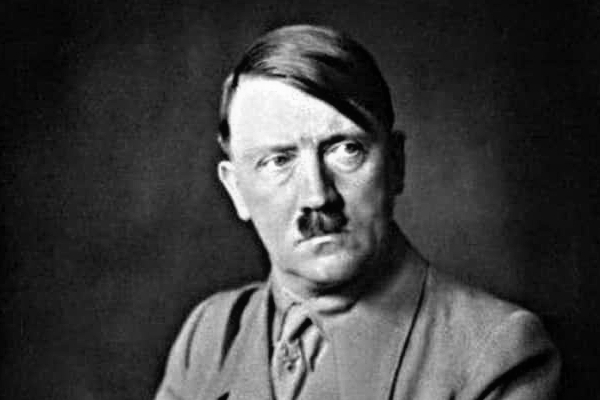Adolf Hitler, one of the most infamous figures in history, was the leader of Nazi Germany from 1934 to 1945. Born on April 20, 1889, in Braunau am Inn, Austria, Hitler’s life was marked by his rise to power, his role in the atrocities of World War II, and his ultimate downfall. This Adolf Hitler biography delves into his early years, political career, and the devastating impact of his regime on the world.
Adolf Hitler Biography – Early Life and Childhood
Adolf Hitler was born to Alois Hitler and Klara Pölzl as the fourth of six children. His father, Alois, was a customs official, and his strict upbringing had a lasting effect on young Adolf. Despite being an intelligent child, Hitler struggled in school and often clashed with authority. He had aspirations of becoming an artist, but his application to the Vienna Academy of Fine Arts was rejected twice, a failure that would profoundly shape his worldview.
The death of both his parents during his youth left Hitler without strong family ties. He moved to Vienna, where he lived a bohemian lifestyle and developed an intense interest in politics. It was during this period that Hitler became exposed to extreme nationalism and anti-Semitic ideologies, which would later define his political philosophy.
World War I and Hitler’s Transformation

In 1913, Adolf Hitler moved to Munich, Germany. When World War I broke out in 1914, he enlisted in the Bavarian Army, serving as a dispatch runner on the Western Front. Hitler was a dedicated soldier and received the Iron Cross for bravery. However, he was deeply affected by Germany’s defeat in 1918, viewing it as a personal betrayal and a humiliation for the nation. This sense of betrayal fueled his hatred for the Treaty of Versailles and those he believed had undermined Germany’s war effort, including Jews and communists.
The war marked a turning point in Hitler’s life, transforming him from a failed artist into a fervent nationalist with a vision for Germany’s resurgence.
The Birth of the Nazi Party
After the war, Adolf Hitler remained in Munich and became involved in politics. In 1919, he joined the German Workers’ Party, a small nationalist group. Hitler’s charisma and oratory skills quickly elevated him to prominence within the party. In 1920, the group was renamed the National Socialist German Workers’ Party (NSDAP), commonly known as the Nazi Party.
One of the key moments in this Adolf Hitler biography was his role in shaping the party’s ideology. Hitler advocated for a nationalist, anti-Semitic, and anti-communist agenda, positioning the Nazis as the saviors of Germany. He also adopted the swastika as the party’s emblem and began using mass propaganda to spread his message.
The Beer Hall Putsch and Imprisonment

In November 1923, Hitler attempted to seize power through the Beer Hall Putsch in Munich, a failed coup against the Weimar Republic. He was arrested and sentenced to five years in prison but served only nine months. During his imprisonment, Hitler wrote Mein Kampf (“My Struggle”), a book that outlined his political ideology and future plans for Germany. The book became the foundation of Nazi propaganda, highlighting his vision of Aryan supremacy and the need for Lebensraum (living space) for the German people.
Adolf Hitler’s Rise to Power
The Great Depression of the 1930s provided the perfect backdrop for Adolf Hitler’s rise to power. Economic instability, high unemployment, and widespread dissatisfaction with the Weimar Republic allowed Hitler to gain the support of the German populace. His promises to restore Germany’s greatness, rebuild the economy, and reject the Treaty of Versailles resonated with millions.
In 1933, Hitler was appointed Chancellor of Germany. Shortly after, he consolidated power through the Enabling Act, which allowed him to rule by decree, effectively making him a dictator. By 1934, following the death of President Paul von Hindenburg, Hitler declared himself Führer (leader) of Germany, merging the roles of Chancellor and President.
The Nazi Regime and Hitler’s Policies

Once in power, Adolf Hitler implemented policies that transformed Germany into a totalitarian state. This section of the Adolf Hitler biography highlights the key elements of his regime:
- Propaganda and Indoctrination:
Hitler used propaganda extensively to control public opinion. Joseph Goebbels, his Minister of Propaganda, played a crucial role in spreading Nazi ideology through films, newspapers, and rallies. - Anti-Semitic Policies:
Hitler’s regime enacted laws to marginalize and persecute Jews. The Nuremberg Laws of 1935 stripped Jews of their citizenship and rights. These policies escalated into the Holocaust, during which six million Jews were systematically murdered. - Militarization and Expansion:
Hitler defied the Treaty of Versailles by rebuilding Germany’s military. He also pursued territorial expansion, annexing Austria (Anschluss) in 1938 and occupying Czechoslovakia. - Economic Reforms:
The Nazi regime implemented policies to reduce unemployment and revive Germany’s economy. However, these were largely geared toward preparing for war.
Adolf Hitler Biography – World War II: The Darkest Chapter
World War II began on September 1, 1939, when Germany invaded Poland, prompting Britain and France to declare war. Hitler’s military strategy, known as Blitzkrieg (lightning war), allowed Germany to conquer much of Europe in a short time. By 1941, Nazi forces controlled vast territories, including France, Norway, and parts of the Soviet Union.
However, Hitler’s decision to invade the Soviet Union and declare war on the United States proved catastrophic. The tide turned against Germany after the Battle of Stalingrad in 1943, marking the beginning of the end for Hitler’s ambitions.
The Holocaust and Crimes Against Humanity
One of the darkest aspects of this Adolf Hitler biography is his role in orchestrating the Holocaust. Hitler’s anti-Semitic ideology culminated in the genocide of six million Jews and millions of other victims, including Romani people, disabled individuals, and political dissidents. The Nazi regime established concentration camps and extermination camps like Auschwitz, where unimaginable atrocities were committed.
The Holocaust remains one of the most horrific events in human history, a stark reminder of the dangers of unchecked hatred and authoritarianism.
The Downfall of Adolf Hitler
By 1944, Germany was losing the war on multiple fronts. Allied forces invaded Normandy (D-Day), and the Soviet Army advanced from the east. Hitler’s health and mental state deteriorated as defeat loomed.
On April 30, 1945, Adolf Hitler committed suicide in his bunker in Berlin, alongside his wife, Eva Braun, whom he had married a day earlier. His death marked the end of the Third Reich and Nazi Germany. Shortly after, Germany surrendered, bringing World War II in Europe to a close.
Legacy and Controversy
The legacy of Adolf Hitler is one of destruction and infamy. This Adolf Hitler biography serves as a reminder of the devastating consequences of his ideology and policies. Hitler’s actions led to the deaths of over 70 million people during World War II and caused unprecedented suffering.
Historians and scholars continue to study Hitler’s life to understand the factors that allowed him to rise to power and the lessons that can be drawn to prevent such atrocities in the future.
Conclusion
The Adolf Hitler biography is a story of ambition, power, and unparalleled destruction. From his early years in Austria to his rise as the Führer of Germany, Hitler’s life was marked by his ability to manipulate, persuade, and lead. However, his actions brought unimaginable suffering to millions and forever altered the course of history.

